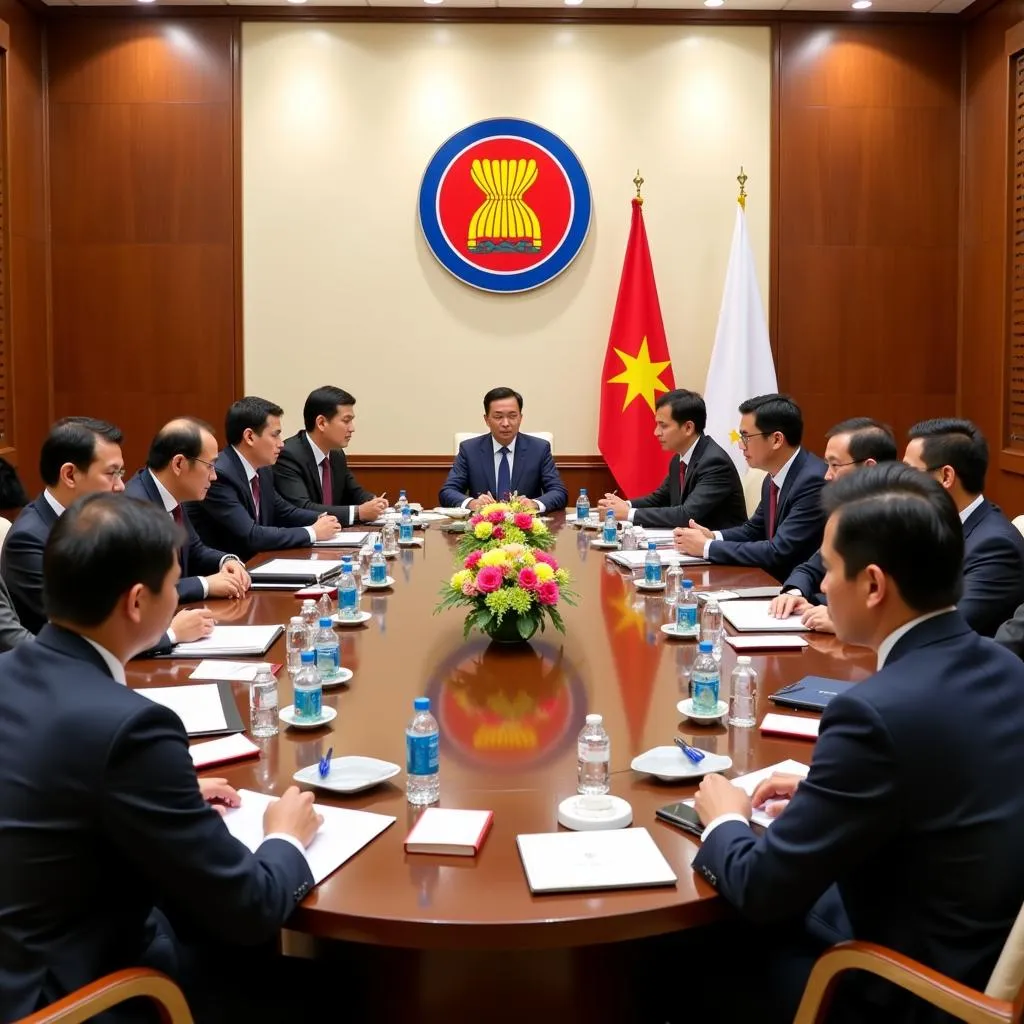The Association of Southeast Asian Nations, or ASEAN, is a political and economic union of 10 member states in Southeast Asia. Established on August 8, 1967, its primary goal is to promote peace, stability, and prosperity in the region. But what exactly does that mean, and how does ASEAN achieve these ambitious objectives? This article delves into the core purpose of ASEAN, exploring its impact on the lives of over 650 million people within its borders and its growing influence on the global stage.
Fostering Regional Cooperation: The Cornerstone of ASEAN’s Mission
At its heart, ASEAN exists to bridge differences and foster cooperation among its diverse member states. This commitment to collaboration is evident in its founding document, the ASEAN Declaration (Bangkok Declaration), which outlines the organization’s key purposes:
- Accelerating economic growth: ASEAN encourages closer economic ties through initiatives like the ASEAN Free Trade Area (AFTA), promoting trade and investment within the region.
- Promoting social progress: ASEAN aims to improve the lives of its citizens by addressing issues such as poverty, education, health, and environmental protection.
- Developing cultural cooperation: Recognizing the richness of Southeast Asia’s cultural tapestry, ASEAN promotes cultural exchange and understanding among its members.
- Maintaining peace and security: By fostering dialogue and cooperation on security challenges, ASEAN strives to resolve disputes peacefully and maintain regional stability.
From Vision to Reality: How ASEAN Achieves its Goals
ASEAN’s success lies in its unique approach to regional integration. Guided by the principles of consensus and non-interference in internal affairs, ASEAN fosters a spirit of partnership and shared responsibility.
- Dialogue and Consensus: ASEAN operates on the principle of “one voice, one identity,” seeking common ground through dialogue and consensus-building.
- Non-Interference: Respecting the sovereignty of each member state, ASEAN refrains from interfering in the internal affairs of another.
- ASEAN Community Vision 2025: This roadmap outlines a shared vision for a more integrated and cohesive ASEAN Community, with a focus on political security, economic, and socio-cultural pillars.
These guiding principles have allowed ASEAN to navigate complex geopolitical dynamics and emerge as a driving force for positive change in Southeast Asia.
ASEAN’s Impact: A Region Transformed
Over the past five decades, ASEAN has played a pivotal role in transforming Southeast Asia into a region of relative peace and growing prosperity.
- Economic Powerhouse: ASEAN has become a major player in the global economy, with a combined GDP exceeding $3 trillion.
- Improved Living Standards: Through various initiatives, ASEAN has contributed to significant improvements in education, healthcare, and poverty reduction.
- Enhanced Security Cooperation: ASEAN’s platforms for dialogue and cooperation have helped manage tensions and maintain regional stability.
However, ASEAN also faces challenges, including economic disparities, territorial disputes, and the need to further strengthen regional integration.
ASEAN in the 21st Century: A Global Partner
As ASEAN celebrates its 56th anniversary in 2023, it stands at a crossroads. With the rise of new global challenges, ASEAN’s role in maintaining peace, stability, and prosperity in Southeast Asia and beyond is more crucial than ever.
- ASEAN Centrality: ASEAN plays a central role in shaping the regional architecture and fostering dialogue among major powers.
- Global Partnerships: ASEAN actively engages with partners around the world, promoting multilateralism and addressing global issues.
- Navigating Geopolitical Complexities: ASEAN is committed to upholding international law and promoting peaceful resolutions to disputes.
In an increasingly interconnected world, ASEAN’s commitment to dialogue, cooperation, and a rules-based order provides a beacon of hope for a more peaceful and prosperous future.
Conclusion
The purpose of ASEAN extends beyond mere economic integration or political alignment. It represents a shared vision for a peaceful, stable, and prosperous Southeast Asia. By embracing its core principles of dialogue, consensus, and non-interference, ASEAN has made significant strides in achieving this vision. As ASEAN navigates the complexities of the 21st century, its enduring commitment to regional cooperation and global partnerships will be key to realizing its full potential.
For those seeking to learn more about specific aspects of ASEAN, I encourage you to explore other resources on our website, such as our articles on the ASEAN + 8 framework and the 2018 ASEAN Tourism Forum.
Need Assistance? Contact us 24/7 via Phone: 0369020373, Email: [email protected] or visit us at Thon Ngoc Lien, Hiep Hoa, Bac Giang, Vietnam. Our dedicated team is ready to assist you.

